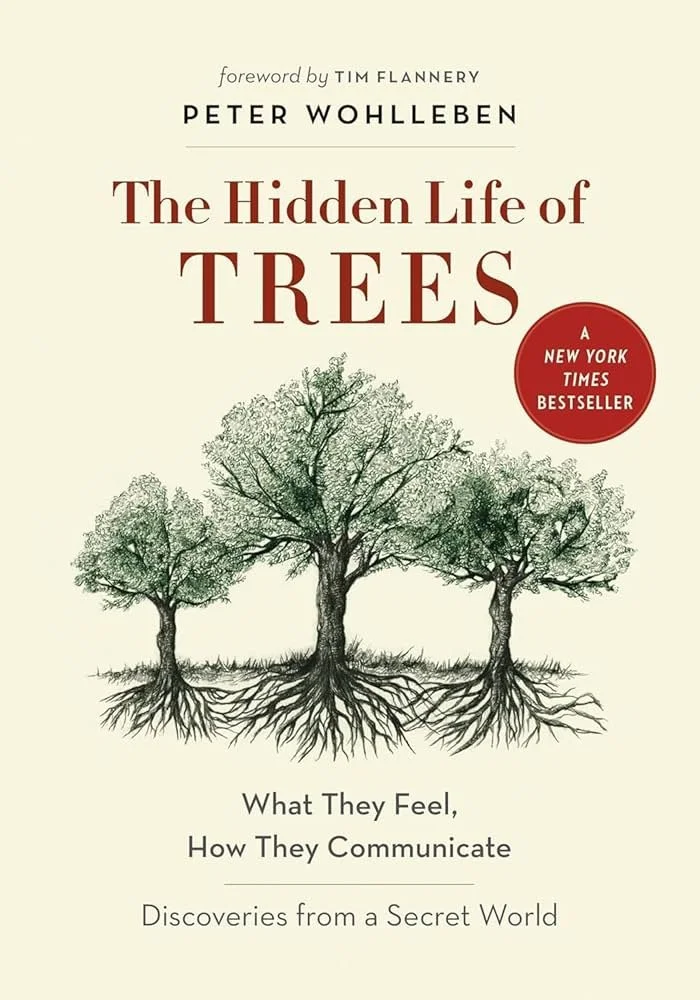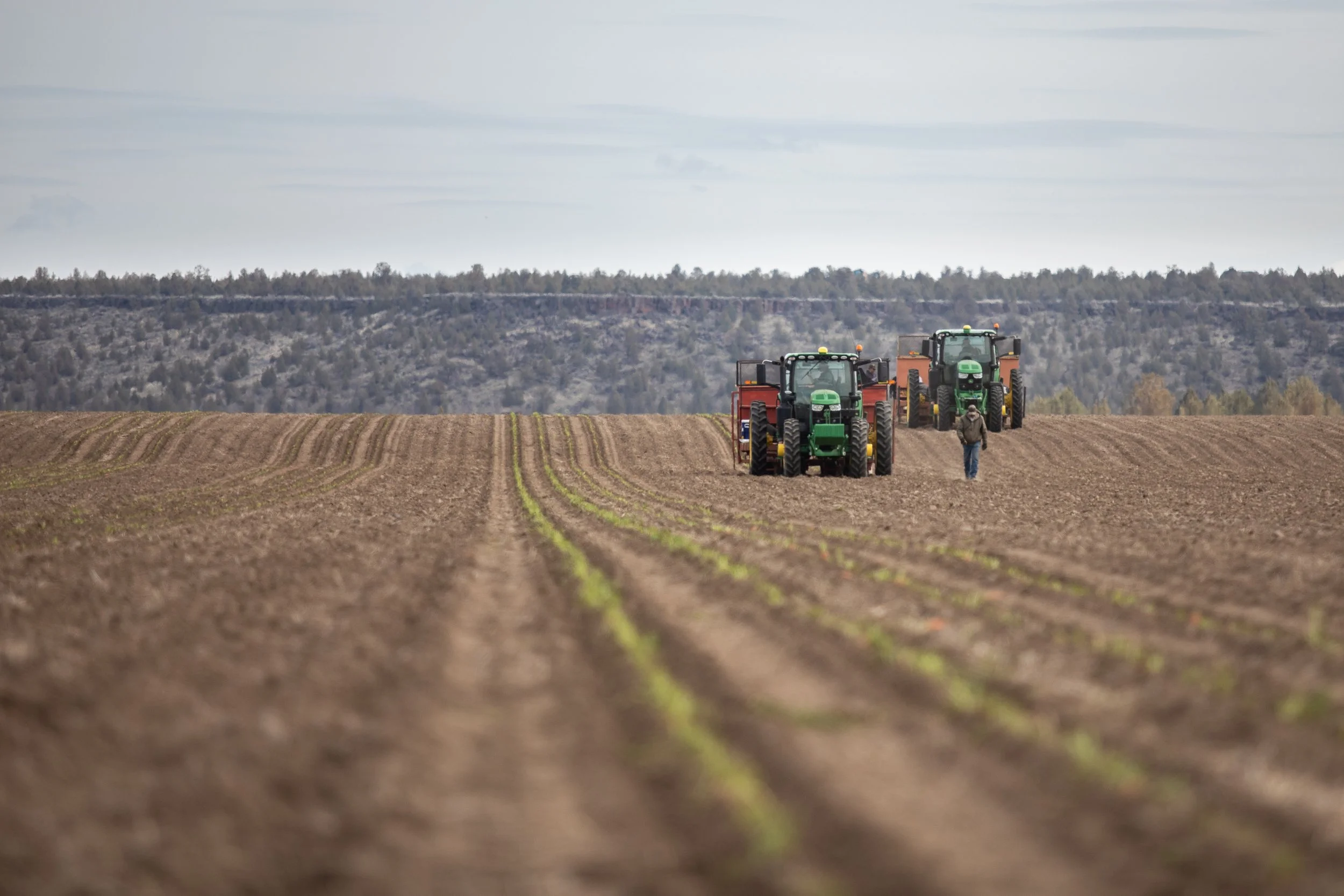Meet The Man Who Speaks for Bend’s Trees
Ian Gray, Bend’s first Urban Forester
With experience shaping city canopies across the West, Urban Forester Ian Gray brings a clear vision for a thriving, climate-resilient Bend
Many people love trees. Most people. But only some people build their whole career around trees.
Ian Gray is the City of Bend’s new and first-ever Urban Forester. We recently connected with Ian for a Q&A so you can learn more about him, his work, and his vision for sustainable urban forestry in Bend.
Q: Where did your fascination with trees start, and what experiences brought you to this point?
I blame my dad for the fondness of all things trees after accompanying him as a kid on field research trips in deforested watersheds in California, Oregon and Washington. My first job in the industry came as a tree planter working in Canada during the summers while at the University of Michigan. My degree had nothing to do with forestry, but while living in the UK I worked for a tree service and I was hooked. After returning to the US, I worked for Davey and Asplundh, had my own little tree firm and eventually ended up in Colorado working for a bespoke tree company servicing the homes of the rich and famous in Aspen. Once I was too long in the tooth to be monkeying up and down trees as a climbing production arborist, I became curious about “urban forestry.” I went to Oregon State University to get a Graduate Certificate in Urban Forestry. Since then, I have worked for cities in California, Colorado, and Washington—and now Bend.
I have over 25 years of experience and there is very little at either the sharp end or the urban management side of the business that I haven’t done.
Westward view from Pilot Butte.
Q: An urban forester is a new position for the City of Bend. Please explain what an urban forester does, and tell us how you are looking to define this role.
The term “urban forester” is sometimes used interchangeably with city arborist or municipal forester. There are technical differences, but generally the focus is on the management and maintenance of trees and tree planting on city property within city limits. I am hoping to help guide Bend toward what my training and experience would call urban forestry best management practices. The guiding principles are to protect what is there already and to make the urban forest as a whole more sustainable, functional, safe and resilient—an asset that everyone can enjoy now and for generations to come.
Q: Why are you most excited about with this new-to-you and new-to-the-city role?
It is a great opportunity to help a rapidly growing city develop a sustainable urban forestry program and be in on the ground level in that process. It doesn’t hurt that Bend is a beautiful area to live in with great mountains and alpine areas on its doorstep. We also have family here which really helps.
Bend’s urban forest plays a key role in creating complete, climate-resilient communities.
Q: How does a diverse urban forest contribute to making our community more climate resilient?
Both species and age or size diversity are important for urban forests. Asa management rule of thumb, urban foresters try to follow the 10-20-30 rule when managing the genetic composition of the urban forest. This means no more than 10 percent of any one species, no more than 20 percent of any one genus and no more than 30 percent of any one family.
Species diversity is critical for avoiding monocultures—because insects and disease are typically species or genus specific, having too many of one type of tree risks wholesale loss of entire tree streetscapes if you rely too heavily on one species. Think Dutch Elm Disease or now Emerald Ash Borer. Millions of trees have been lost. Pest and disease issues are becoming more problematic as the planet warms.
Research shows that tree diversity also helps moderate temperatures. We already know that urban forests have a marked effect on reducing the urban heat island. As the climate continues to warm, it will be increasingly important that we try additional species of trees better suited to drier hotter conditions. Tree diversity goes hand in hand with climate resiliency.
Q: How would you characterize the relationship between an urban forester and the development community?
I would describe it as an opportunity to partner in the health of a community. This is a world where we can have both greener and denser communities. We need more housing, but it doesn’t have to be a zero sum game – having this but not the other. There must some give and take, to be sure, and hopefully my experience can help find the way to those particular solutions.
You can get involved in Bend’s sustainable urban forestry by volunteering with Ian during the 2026 tree inventory.
Q: We know you're looking for volunteers for a tree inventory effort next spring. What skills do volunteers need to have? Will they get any cool perks?
No skills are needed, just some enthusiasm and commitment. Training and supervision will be provided of course, but anyone will be welcome to try their hand at being a resident scientist. The project will run from mid-May until possibly Labor Day, depending on how many volunteers sign up and how quickly we work our way across the city. There will be some swag for sure, and every volunteer will be acknowledged in an eventual report done at the end of the project.
Q: For our next Livable Future Forum event, on Nov 13, journalist, author, and editor Michelle Nijhuis will walk us through 20 essential environmental reads. What book do you hope to see on her list?
For starters, you must include The Lorax by Dr Seuss in the list—my all-time favorite. I have a tattoo of the Lorax, which I got after the first of my five seasons as a tree planter in Canada. I also recommend the following:
The Wild Trees by Richard Preston (the hunt for the tallest tree)
Finding the Mother Tree by Suzanne Simard (brilliant Canadian researcher)
American Canopy by Eric Rutkin (how trees built America)
The Biophilia Effect by Clemens G. Arvay (the healing effect of nature on humans)
The Hidden Life of Trees by Peter Wohlleben (how trees communicate)










